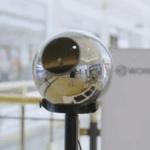
The unstoppable march of technology has had an unmistakable impact on human culture and society since weapons were first formed out of raw materials and the capacity to generate fire was perfected. There is technological advancement all around us. Technology has shaped our world and molded our lives into what they are today, from your car and the device you’re reading this article on to your television, jet planes, and beyond.
It’s maybe not strange, then, that one of the first technologies ever devised – the shelter – is developing right in front of our eyes to take advantage of the many technologies available. Whether you live in a house or an apartment, the typical shelter is about to undergo a major transformation. That shift? Smartphones, networked devices, and other technological marvels will all play a role in molding the “smart life” of the twenty-first century.
Is the Smart Home Here to Stay?
More than 180 million smart home items are expected to have been delivered to market by 2018. The industry is expected to grow by more than 50% in the following three years. If the smart home hasn’t come in full force yet, it will before we know it. And much of this can be credited to the so-called Internet of Things, which is a growing movement to connect all objects, not just phones and computers.
But what is the point of having a smart house in the first place? Because linked gadgets outperform traditional alternatives in a variety of ways. They provide homeowners and apartment residents more control over their homes, increase security, add conveniences and luxuries, and allow them to be more environmentally responsible in the process. Consider connected devices as digital butlers or maids who perform your work so you don’t have to.
Smart gadgets exist in many shapes and sizes, and if recent introductions like the Keecker are any indicator, these shapes and sizes are only going to grow in the future. A smart thermostat, such as the one made by Nest, can even learn. The advantages of such a gadget are obvious: constant perfect temperatures with little effort and energy. Google, one of the forerunners in the smart home revolution, appears to agree; in fact, the corporation recently purchased Nest for $3.2 billion.
What the Smart Home Means for You – A New Way of Life
There can be little doubt that technology in the home is here to stay, with established, trustworthy firms like Google and Samsung at the forefront of the “smart home” movement. But, in general, what does the new smart home say about society? When you connect the dots – the rise of smart home technology, the ubiquity of smartphones and other devices, and the rising Internet of Things movement – it’s difficult not to conclude that society is moving away from smart devices and toward smart lives. And it’s not difficult to see why. That aside technologies like air filters are helping keep the house environment clean and its air fresh.
A smart life promises to be a better existence: more comfortable, less stressed, more connected, and possibly more complete. Of course, the Luddites and traditionalists among us would claim (maybe not without reason) that our over-dependence on technology devices such as the smartphone has rendered us incapable of connecting with the actual world. Even when we’re in the same room as the people we care about, we’re engrossed on our phones. To some extent, this may be correct. In the end, there’s no doubt that technology is here to stay, and that it will continue to have a significant impact on our lives. Hopefully, it will be for the better.
Discover more from TechBooky
Subscribe to get the latest posts sent to your email.







